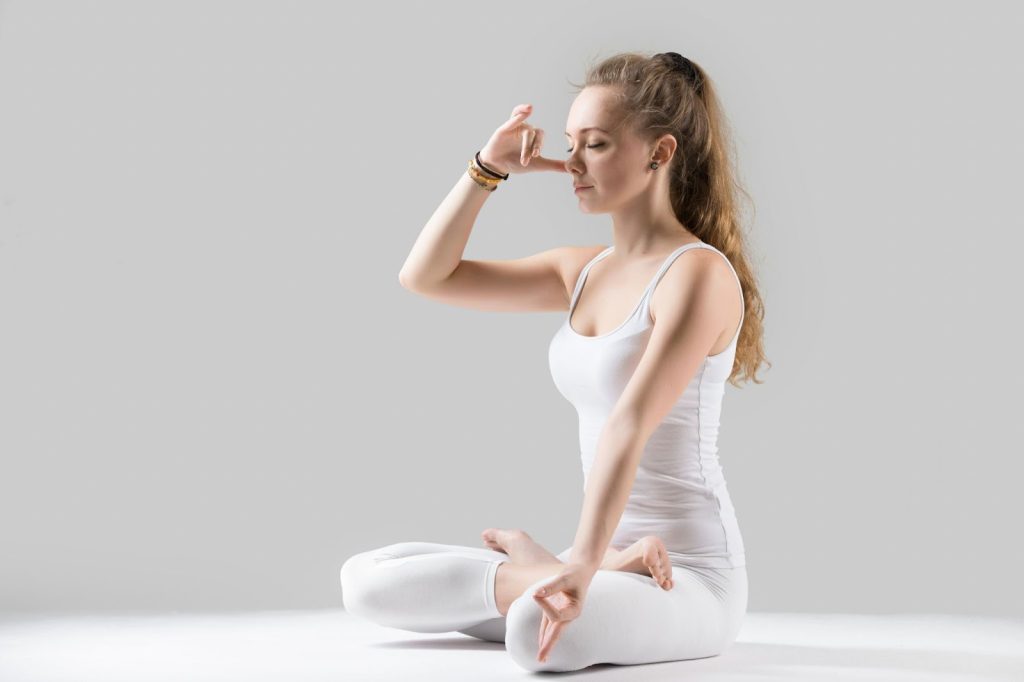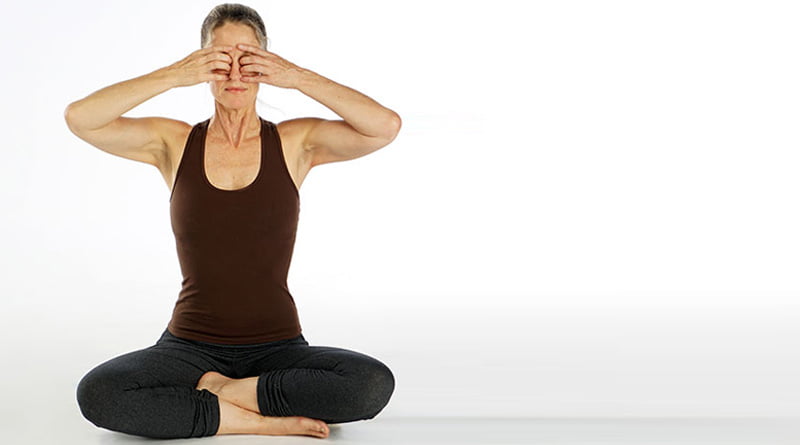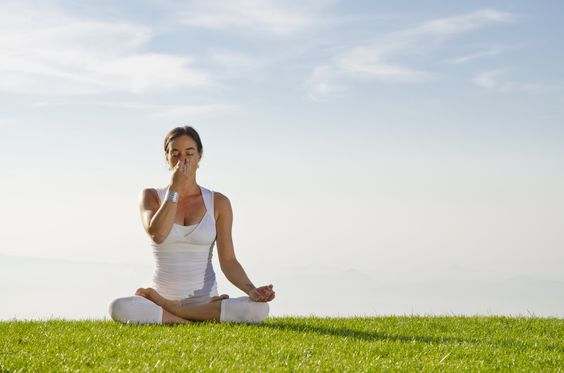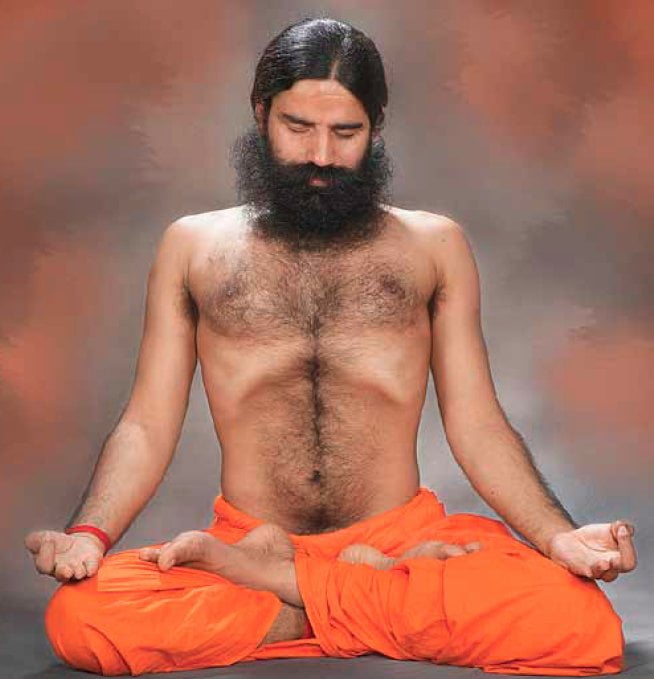Pranayama, the ancient yogic science of breath control, is a cornerstone of traditional yoga practice. Among its many techniques, Viloma Pranayama holds a unique place due to its calming, balancing, and deeply therapeutic qualities. The term Viloma means “against the natural order” or “against the grain.” In Viloma Pranayama, the breath is intentionally interrupted, which contrasts with the smooth and continuous breathing of other pranayama practices.
This interruption, however, is deliberate and controlled, leading to increased awareness, lung capacity, and nervous system balance.
Table of Contents
Types of Viloma Pranayama:
There are three main types of Viloma Pranayama:
Viloma Inhalation (Puraka Viloma): Interrupted inhalation, continuous exhalation.
Viloma Exhalation (Rechaka Viloma): Continuous inhalation, interrupted exhalation.
Full Viloma (Puraka and Rechaka Viloma): Both inhalation and exhalation are interrupted.
Benefits of Viloma Pranayama:
There are many benefits of Viloma Pranayama. These are…
Improves Lung Capacity:
Viloma Pranayama trains the lungs to expand more fully by segmenting the breath. Particularly beneficial for those recovering from respiratory issues.
Strengthens Respiratory Muscles:
The pauses build control and awareness in the diaphragm and intercostal muscles.
Enhances Oxygen Exchange:
Slower, mindful breathing promotes better oxygen absorption and the release of carbon dioxide.
Supports Cardiovascular Health:
Regulates heart rate and promotes parasympathetic (rest-and-digest) activation.
Aids Digestion:
Reduced stress and calm breathing improve gut-brain communication and digestion.
Useful for Asthma Recovery (with guidance):
Can gently retrain breathing patterns and increase confidence in breath control.
Reduces Stress and Anxiety:
The rhythmic pauses bring focus, calmness, and a sense of control over the breath and mind.
Improves Focus and Concentration:
Training the mind to stay present with interrupted breath enhances mental sharpness.
Promotes Emotional Stability:
Regular practice cultivates inner calm, patience, and reduced reactivity.
Helps with Insomnia:
Calms the nervous system and prepares the body for restful sleep when done before bed.
Soothes Panic and Nervousness:
Especially helpful for those who experience shallow or anxious breathing.
Balances Prana (Life Force):
Distributes prana evenly throughout the body by regulating the breath.
Prepares for Meditation:
Brings the mind inward and steady, making it easier to enter deeper meditative states.
Supports the Subtle Energy Body (Nadis):
Helps remove energetic blockages and balances Ida and Pingala nadis (left/right energy channels).
Builds Breath Awareness:
Develops subtle sensitivity to breath rhythms, which is key for advanced pranayama.
Contraindications
Avoid or modify Viloma Pranayama if you have:
- Severe asthma or breathing disorders (consult a doctor)
- Cardiovascular issues
- High or low blood pressure (practice under supervision)
- Pregnancy (avoid breath retention)
Always practice under guidance if you’re a beginner or have any medical conditions.
How to Practice Viloma Pranayama:
See below how to practice Viloma Pranayama…
- Find a quiet, well-ventilated space.
- Sit in a comfortable meditative posture, such as Sukhasana, Padmasana, or on a chair with a straight back.
- Keep the spine erect and shoulders relaxed.
- Close your eyes and take a few natural breaths to settle.
Advanced Tip:
Only attempt full Viloma when you are comfortable with the separate inhalation and exhalation versions. It’s more complex and requires greater control and focus.
When and How Often to Practice?
- Time: Morning or evening on an empty stomach.
- Frequency: Start with 5 minutes, working up to 10–15 minutes per session.
- Integration: Can be practiced before meditation or after asana practice.
Conclusion
Viloma Pranayama is a gentle, methodical breathing technique that offers profound benefits for physical, emotional, and mental well-being. Whether you’re a beginner learning breath control or an experienced yogi refining inner awareness, Viloma provides a structured path toward stillness, clarity, and resilience.
FAQ:
Q. What does “Viloma” mean?
A. Viloma means “against the natural order” in Sanskrit. In the context of pranayama, it refers to breathing that is intentionally interrupted or segmented, as opposed to the natural, continuous flow of breath.
Q. How is Viloma Pranayama different from other pranayama techniques?
A. Viloma involves pause-and-breathe cycles during inhalation, exhalation, or both. Unlike other techniques like Nadi Shodhana (alternate nostril breathing) or Kapalabhati (rapid breathing), Viloma focuses on controlled interruption, making it a great preparatory practice for deeper breathwork and meditation.
Q. Is Viloma Pranayama safe for beginners?
Yes, it is considered safe and gentle for most beginners, especially when starting with interrupted inhalation only. Beginners should:
- Avoid breath-holding beyond comfort
- Start slowly (just 3–5 rounds)
- Ideally, practice under guidance
Q. How often should I practice Viloma Pranayama?
- Frequency: 1–2 times daily
- Duration: Start with 5 minutes, increase gradually to 10–15 minutes
- Best practiced on an empty stomach, preferably in the morning or evening
Q. Should I do it before or after asanas (yoga poses)?
Viloma Pranayama can be practiced:
- After asanas, when the body is warmed up and the breath is steady
- Before meditation, to calm and center the mind
Q. Can Viloma Pranayama be practiced lying down?
A. Yes. Especially for beginners, the elderly, or those with respiratory issues, Viloma can be done in a reclined position (like Supta Baddha Konasana) with proper support to promote relaxation without strain.
Q. Is breath retention (Kumbhaka) required?
A. Viloma does involve short, natural pauses, but it’s not the same as formal Kumbhaka (breath-holding). The pauses are gentle and non-straining. Beginners should avoid forceful retention.
Q. Can I combine Viloma with other pranayamas?
A. Yes. It pairs well with:
- Anulom Vilom (alternate nostril)
- Bhramari (bee breath)
- Ujjayi (victorious breath)
Practice Viloma first, followed by more advanced or stimulating pranayamas if desired.





